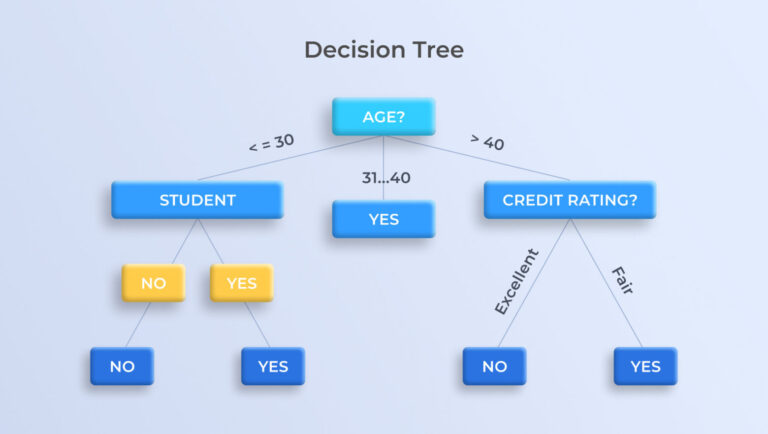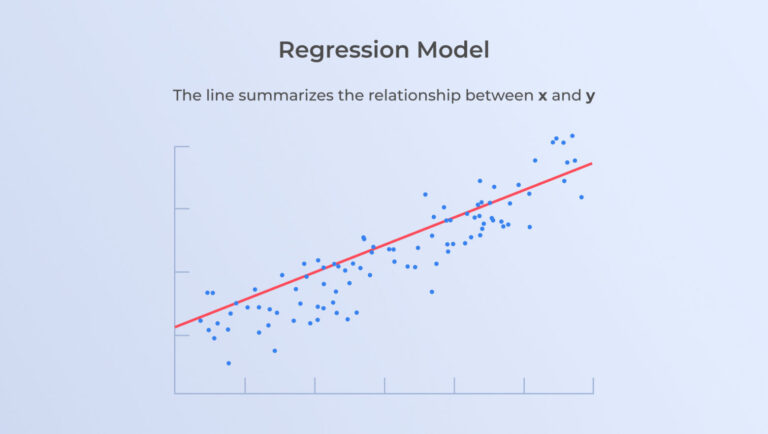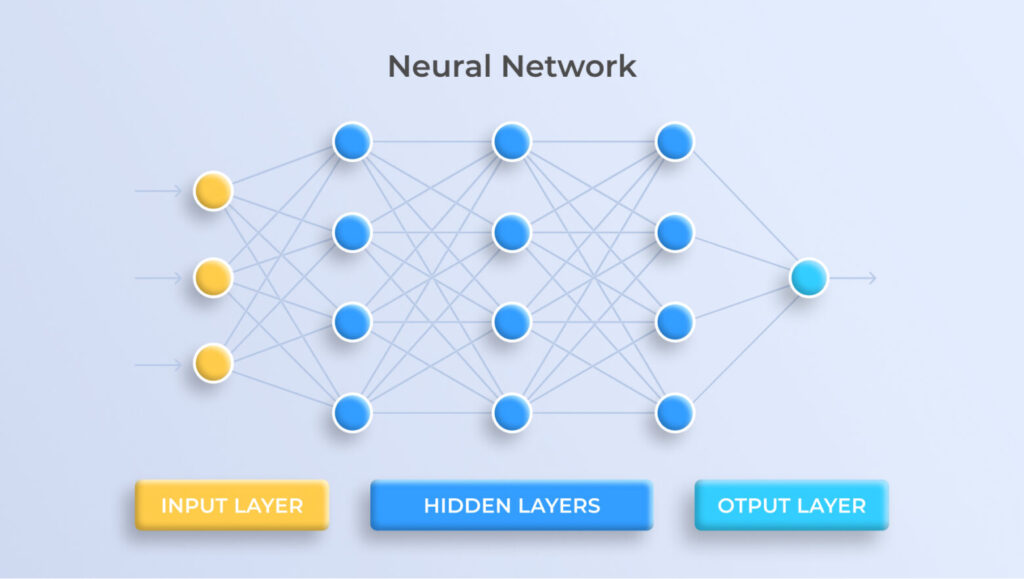Table of Contents
Every business encounters thousands of challenges that require precise and accurate decision-making as responses to those posed challenges. Sometimes it is a tough call, as it might be hard to predict outcomes, or the information is hard to comprehend and draw adequate conclusions from.
Fortunately, there is a solution that combines software development and statistics. Predictive analytics software is a useful and highly efficient tool that helps businesses switch to data-driven decision-making and forecasting models.
In this article, we will discuss how predictive analytics works and what benefit it brings to companies in different fields, and last but not least, show examples of the most successful predictive analytics tools.
What is Predictive Analytics Software Methods
Nowadays, businesses have enough means to generate great amounts of information. IoT application, ERP, and CRM systems are aimed to gather data on enterprise production, sales and distribution, relationships with clients and vendors, and cooperations between different departments within the company.
Modern computing has reached a milestone when the process of storing and processing big data is available to most companies that seek it. So, how can businesses leverage the huge amount of generated data to improve or optimize their performance and costs?
Predictive analytics is one of the options, and truth be told, it is pretty appealing. Such software runs an analysis of current and historical data and comes up with a prediction on future developments. Statistical methods underlie the concept of predictive analytics which is traditionally considered to be a part of data science.
The main importance of predictive analytics is to give businesses reasonable, processed data to weigh decisions. Instead of resorting to assumptions, guesswork, and frivolous hypotheses, management staff and C-level executives gain the ability to base their decisions and strategies on statistical analysis.
Predictive analytics software development can also improve or quicken routine processes, as well as create new value for end-point clients.
3 Most Popular Predictive Analytics Techniques
Predictive analytics uses various techniques, including well-known data mining and machine learning. Here are the most notable methodologies that are widely used in predictive analytics software.
Decision Tree
A decision tree is one of the possible algorithms. It is quite popular as it provides a comprehensive visual representation. As you can guess, it looks like an upside-down tree, which gives different outcomes for different given parameters. So, it is useful when there is a need to predict what decision should be made in certain situations.
Here is a simple example of a decision tree that can be used by a bank to determine if the client’s request for a loan should be approved.

Regression Model
Regression is another commonly used technique in predictive analytics. Basically, it calculates the relationship between at least two variables. For example, you can run linear regression (between two variables) if you want to know how the amount of time customers spend on your website correlates with their decision to make an online purchase from you.

Neural Networks
Neural Networks are modeled after the simplified version of how the human brain works. They usually show the relationships between the complex input/output data with a hidden layer where computation occurs. One of the most common use cases for this technique is healthcare, where it is applied to diagnose patients.

Challenges Associated with Predictive Analytics
Predictive analytics software can definitely add a lot of value, but as with any new tools, it also adds some new challenges the company needs to know how to handle.
One of the biggest concerns executives express about predictive analytics is its trustworthiness. Is it sensible to rely on some prediction made by a tool instead of years of entrepreneurial experience and intuition?
The issue is most acute when the data used by predictive analytics software isn’t clean, meaning that some records may be corrupted by human bias, inaccurate, or incorrect. Of course, when the time comes for the algorithm to process this data, the analysis will end up being unreliable and irrelevant. Even one such case can be enough to undermine the credibility of predictive analytics, and a company might put aside an otherwise powerful tool.
But when the data is clean and correct, predictive analytics will actually provide you with realistic results, backed by statistics. Considering that even the greatest human minds have their limits, resorting to appropriate applications like predictive analytics software is necessary when the amount of data becomes huge, and it will be too resource-intensive to handle it manually.
Another challenge is adoption. As with any complex, advanced technology, the company may encounter resistance or lack of enthusiasm in the reception of the implementation of predictive analytics. Unfortunately, it’s natural for employees to feel uneasy about new technologies, as they bring significant change in their routine and habits of work processes.
So how can the company smooth out the introduction of predictive analytics to the work-life of employees? A good idea will be to establish a strategy and explain the impact of the technology. But we suggest that you also consider implementing predictive analytics into an application your employees are already familiar with. Your current ERP system may be excellent for this purpose.
Enterprise Resource Planning systems are usually designed to store all kinds of information your company operates with, so combining it with predictive analytics is the next logical step.
Altamira can help you run this integration: we have a wide experience in ERP and similar business application development (check our portfolio cases, for example, HDR Print and Leo). Our tech leads and business analysts will determine the best strategies on how to scale your ERP system with predictive analytics and upgrade it to a new level of automation.
Predictive Analytics Use Cases by Industry
The real value of new technology is defined by its practical application. Predictive analytics is the one that shows a lot of potential and benefit in a lot of business fields.
Predicting buying behavior in retail
The relationship with customers is extremely important for retailers. Winning trust and gaining loyal clients with whom you can develop long-lasting partnerships is a goal for marketers. And as you can guess, predictive analytics can make this process smarter and give the required instruments to retain customers.
Retailers can now obtain significant amounts of data on the buying habits of their customers. Through loyalty programs and discount cards, companies may understand what product a certain client usually buys, what categories of goods they may be interested in (e.g if the client has children and is interested in appropriate products), when they go shopping, etc. With the rise of social media and digital communications, it’s also easy to target customers with customized advertising campaigns and record feedback.
When such data is generated, predictive analytics software will be able to forecast:
- customer churn, retention, and satisfaction;
- the times when demand will be high;
- run market basket analysis and determine what products are usually bought in bulk;
- detect high-value customers who will bring you the most profit.
Predicting maintenance in manufacturing
Another brilliant combination of IoT, AI, and predictive analytics allows manufacturers to gain more control over crucial equipment in factories, plants, and supply chains. With predictive maintenance, it is possible to prevent failures and downtimes, therefore, save a certain amount of money.
To run such analysis, manufacturers need to obtain data on equipment failure history, maintenance history, conditions of how the machines are operating (and here is when IoT can provide relevant real-time data), and statistics feature data. Then, specialists may know when it is time to run maintenance of a machine before it breaks and creates a production bottleneck.
What more is there to know about predictive maintenance? Check our guide on Industrial IoT that plays a big role in this process.
Detecting sickness in healthcare
The healthcare field benefits a lot from predictive analytics. It gives healthcare providers the ability to resort to a preventive approach and detect health deterioration or spot conditions in the early stages.
Using IoT, medical staff may monitor the state of the patient in the ICU or while they are just going about their daily lives. Predictive analytics tools can use this info and identify those who will most likely need medical intervention to prevent drastic deterioration of health.
In the same way, the algorithm can forecast the risk of a person’s death or readmission to the hospital in the next couple of days, which helps determine whether or not the patient should be discharged.
Predictive analytics can also improve the healthcare plans for patients with chronic diseases like diabetes. Having all relevant data on patient diagnoses, age, underlying illnesses, medical history, etc., predictive analytics can identify high-risk situations before they are critical or get out of hand. Medical specialists can use this info and provide care proactively before the patient’s state worsens and hospitalization is needed.
Curating content in entertainment
Predictive analytics can be successfully implemented in the entertainment industry, and Netflix is a pioneer here. The platform constantly gathers data on user behavior: what shows they watch, how long it takes to finish a show, what scenes the audience returns to rewatch, etc. Based on this info, the company runs analytics.
Users, from their side, receive pretty good suggestions on what to watch next, but the value for the company is even bigger. Thanks to this smart data collection, Netflix creates shows that are already guaranteed to be successful — as it happened with House of Cards. Another trick the company does is varying trailers for different audiences. For the same House of Cards, Netflix created a dozen different trailers. Depending on what your viewer’s history is, Netflix showed users the trailer that they probably would like the most.
Detecting fraud in cybersecurity
Cybersecurity specialists should always be ready to deal with data breaches and fraud, but in most situations, they detect a problem when it has already happened. But predictive analytics can change this pattern and help to stop the attacker before any harm is done.
Cybercriminals, however skilled they are, leave a track behind them — emails, social media activities, records, etc. It’s almost impossible for a person to process this information in a matter of minutes, but for an algorithm, it is very doable to quickly analyze the information and notify if the company is under attack.
Predicting employee turnover in HR
The HR field can use predictive analytics to increase the efficiency of the hiring process and reduce costs. A high level of turnover is a problem, and usually, when employee quitting is rampant, the company needs to invest more resources, both financial and temporal, to hire a new employee, as well as onboard and train him or her.
Predictive analytics can analyze the historical data of the company and employees’ tenure there: understand why it’s usually experiencing staff turnover, how often employees receive promotions and raises, etc. The results of the analysis will contribute to predicting the future behavior of current employees and define the reasons why people are more likely to leave the company.
Data science is a useful tool for many industries. Check how predictive analytics and other data science methodologies improve the finance field.
Predicting performance in sports
Advanced analytics is a game-changer for sports, especially for such popular ones as soccer. With the usage of predictive analytics, sports organizations, coaches, team management can make data-based decisions on training strategies, tactics, player scouting, injury prediction, and avoidance, growing fan base, and ticket pricing.
Basically, the industry players are interested in making decisions that will have the highest probability of their desired outcome, whether it will be to enhance the team with appropriate talent, determine the best positions for players on a specific day or focus on choosing the best advertising strategy based on fans social media activity.
Forecasting patterns in weather
We always hope that we won’t regret believing the weather forecast when we decide to leave our umbrella at home. However, for enterprises, the issue may be more crucial, and accurate forecasting is a must. In agriculture, the actions of farmers depend on the weather, for logistics companies, rain may delay deliveries, and the sports industry may need to cancel games in case of certain weather conditions. Predictive analytics and data science allow weather companies to improve the accuracy of their forecasting.
Top 5 Predictive Analytics Software Tools
SAP Analytics Cloud
This tool includes several features: business intelligence, predictive analysis, and planning. The software offers great visualization capabilities that transform data into powerful insights. Users often praise it for functional and easy-managed charts.
SAS Advanced Analytics
This is one of the most widely used applications in the field of advanced and predictive analytics. SAS helps companies dig into their problems and find solutions through the power of the cutting-edge algorithm.
Alteryx
Alteryx offers an Intelligence Suite that makes text analytics and machine learning easy and available for companies of all sizes. The suite also contains dozens of predictive analytics tools powered by the R programming language.
MicroStrategy Analytics
MicroStrategy is an analytics platform for enterprises. The tool offers more than 60 integrations with data source connectors and around 300 analytics functions, including advanced and predictive analytics.
TIMi Suite
TIMi Suite offers one integrated platform that takes care of enterprises’ needs in big data, data cleansing, and further predictive analytics, artificial intelligence, and machine learning. Another great feature is 3D-modelling capabilities with VR compatibility.
Custom Development Of Predictive Analytics Software
The market has a lot of ready-made predictive analytics solutions on offer. You can do a little research and choose the one that will be the most suitable for your business. However, we believe that your company may benefit more from a custom-developed analytics tool.
Let’s contemplate a few crucial aspects to consider to best choose between ready-made and custom software.
Price
- Ready-made: Modern ready-made software subscriptions usually charge you monthly or yearly recurring charges and offer different payment plans with different sets of features. It may also charge you for the number of employees using the application. Predictive analytics tools come in different price ranges— some basic ones may be very affordable, but they may not have enough power for your goals. While other, more advanced ones may cost up to thousands of dollars every month.
- Custom: Custom development of predictive analytics software is a resourceful task and requires a significant budgetary allotment. But it is a good investment into the growth of your company: you will receive custom, reliable software you will have full control over. And you can always start with MVP development and get a basic, but functional product.
Support
- Ready-made: Product companies usually provide a support team whom you can ask for help or consultation. However, you can never be sure how long it will take to solve your issue, or what really is happening “under the surface”. The product is usually used by dozens of other clients, so the focus of the support team won’t be solely on you.
- Custom: The big benefit of custom software is that only your company will use it. You can have full insight into its operation, troubleshooting, etc. But if you don’t have an internal IT team who can run maintenance of the application — don’t worry! Altamira provides maintenance plans, and we can take care of any bugs or other issues even after the software is deployed.
Implementation
- Ready-made: Adopting ready-made software is quick — you need to buy a subscription, and you’re good to go almost immediately. But the issues of implementation still exist. Every company has its own approach, standards, and policies, and ready-made software is rarely flexible enough to reflect that and accommodate those needs. Your team that is already alerted because of changes also needs to readjust to the unfamiliar designs and flows.
- Custom: If ready-made software makes you adjust, then custom applications adjust to your needs, requirements, and wishes. From the start, your application will be tailored for easy implementation and adoption. Our software development is also flexible: we follow Agile methodology that allows us to make changes during the development without any harm done to the productivity or budget.
In Conclusion
Data is a key to success and growth in the enterprise world. The competition is only accelerating further with the development of newer and newer technology. And just relying on wit, creativity, or gut feelings is no longer enough to dominate markets and stay profitable. Data science, statistics, advanced analytics, and artificial intelligence bring science-backed decision-making to businesses, and it would be unwise to neglect such an opportunity.
Predictive analytics software is a tool worth investing in regardless of the industry the business operates in. Take the most from the data you already have and improve the performance of your company.



